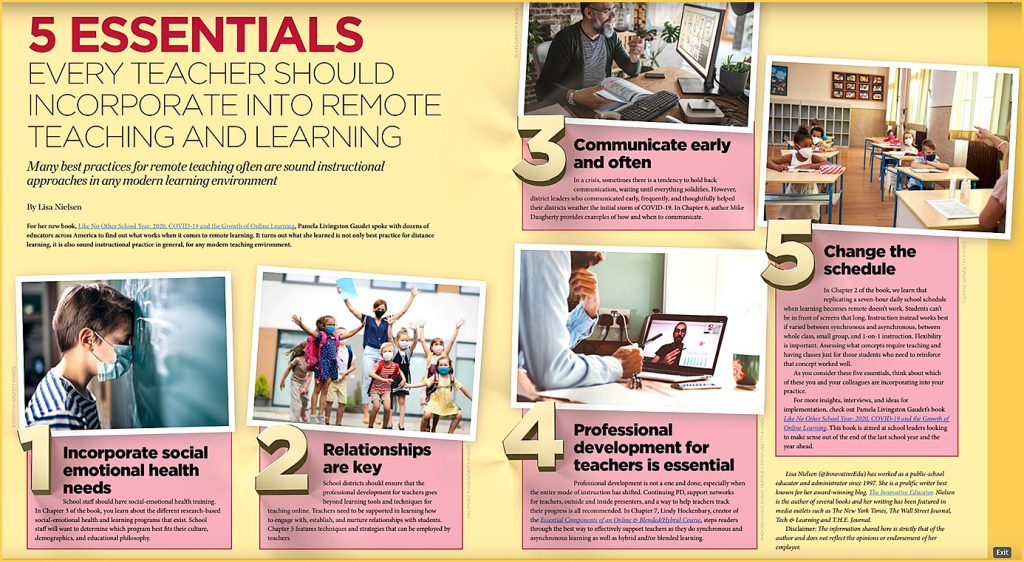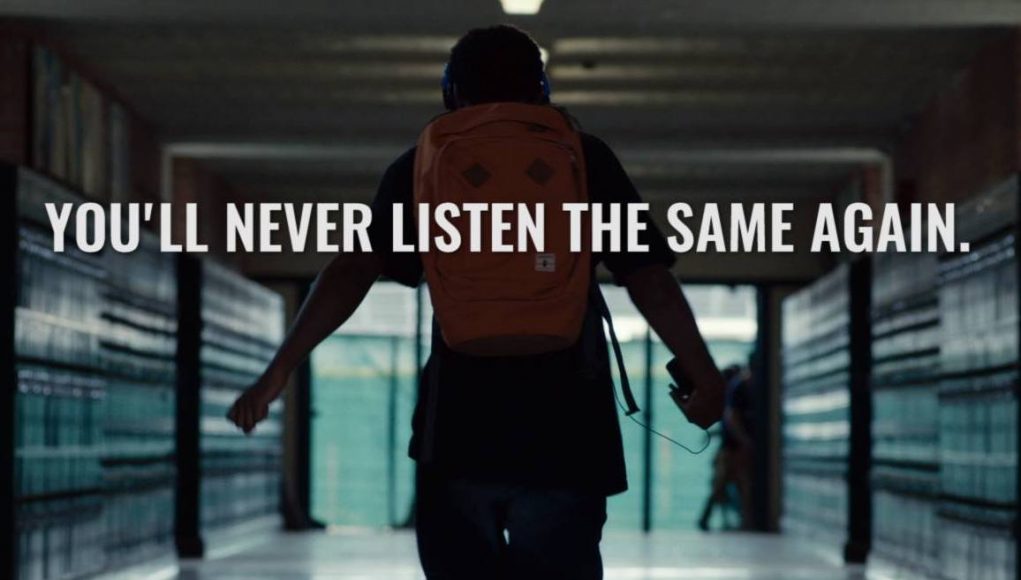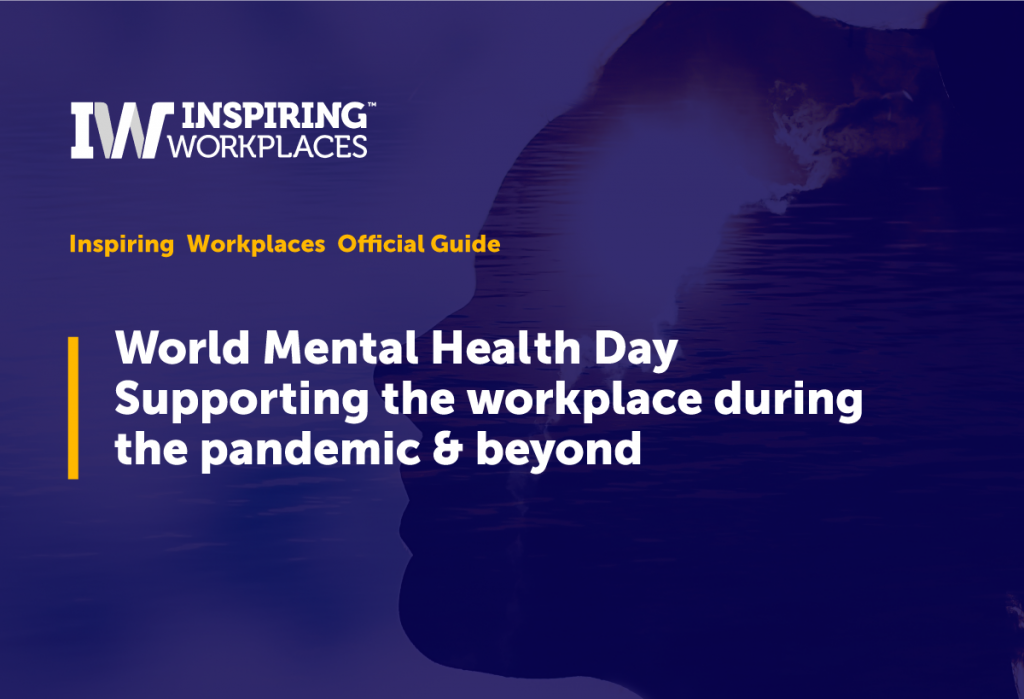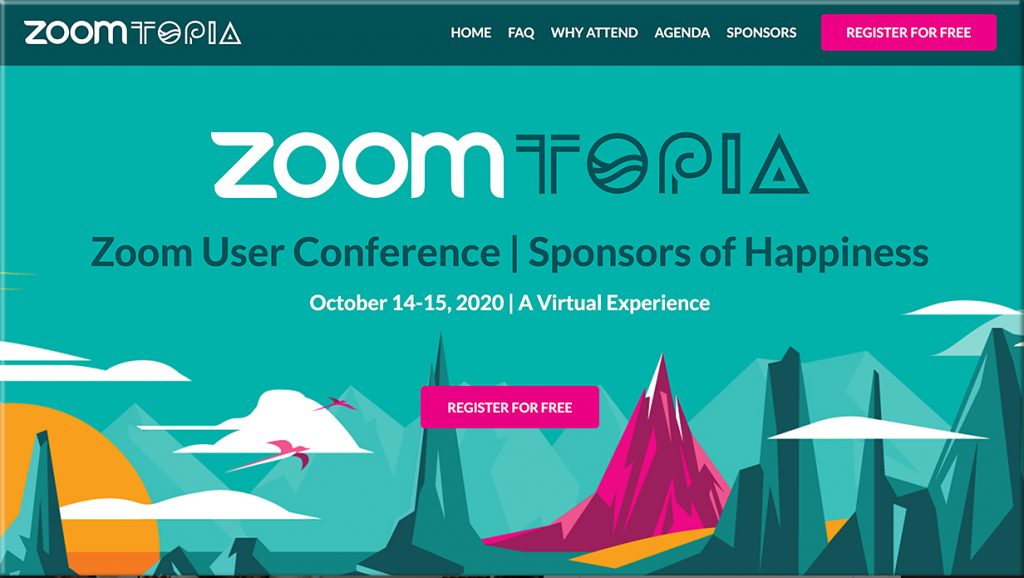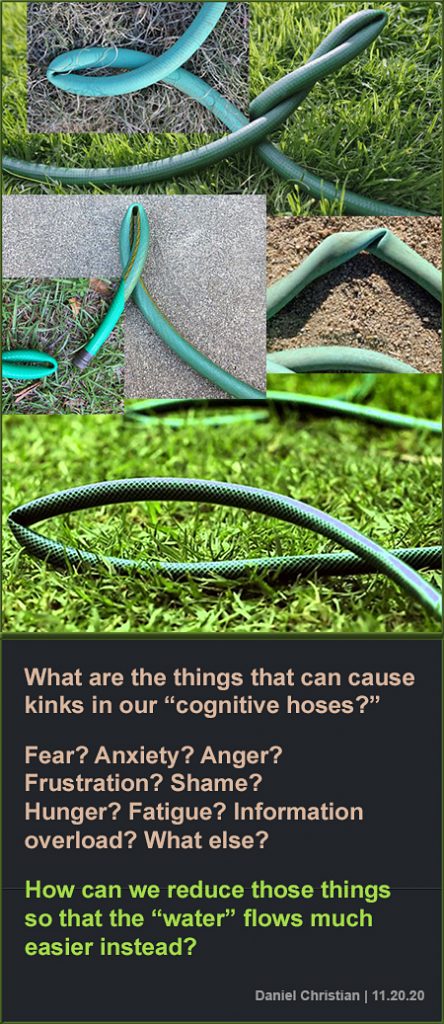
Temperament-Inclusive Pedagogy: Helping Introverted and Extraverted Students Thrive in a Changing Educational Landscape — from onlinelearningconsortium.org by Mary R. Fry
Excerpt (emphasis DSC):
So how do we take these different approaches to learning into account and foster a classroom environment that is more inclusive of the needs of both extraverts and introverts? Let’s first distinguish between how extraverts and introverts most prefer to learn, and then discuss ways to meet the needs of both. Extraverts tend to learn through active and social engagement with the material (group work, interactive learning experiences, performing and discussing). Verbalizing typically helps extraverts to think through their ideas and to foster new ones. They often think quickly on their feet and welcome working in large groups. It can be challenging for extraverts to generate ideas in isolation (talking through ideas is often needed) and thus working on solitary projects and writing can be challenging.
In contrast, introverts thrive with solitary/independent work and typically need this time to sort through what they are learning before they can formulate their thoughts and articulate their perspectives. Introverted learners often dislike group work (or at least the group sizes and structures that are often used in the classroom (more on this in a moment)) and find their voice drowned out in synchronous discussions as they don’t typically think as fast as their extroverted counterparts and don’t often speak until they feel they have something carefully thought out to share. Introverted learners are often quite content, and can remain attentive, through longer lectures and presentations and prefer engaging with the material in a more interactive way only after a pause or break.
From DSC:
Could/would a next-generation learning platform that has some Artificial Intelligence (AI) features baked into it — working in conjunction with a cloud-based learner profile — be of assistance here?
That is, maybe a learner could self-select the type of learning that they are: introverted or extroverted. Or perhaps they could use a sliding scaled to mix learning activities up to a certain degree. Or perhaps if one wasn’t sure of their preferences, they could ask the AI-backed system to scan for how much time they spent doing learning activities X, Y, and Z versus learning activities A, B, and C…then AI could offer up activities that meet a learner’s preferences.
(By the way, I love the idea of the “think-ink-pair-share” — to address both extroverted and introverted learners. This can be done digitally/virtually as well as in a face-to-face setting.)
All of this would further assist in helping build an enjoyment of learning. And wouldn’t that be nice? Now that we all need to learn for 40, 50, 60, 70, or even 80 years of our lives?
New Resource for Inclusive and Equitable Teaching — from community.acue.org
Excerpt:
Achieving equity requires that we teach with practices that embrace the diversity of our students’ backgrounds. We must also thoughtfully review our instructional approaches to identify—and change—any unintended practices that might limit student expectations and achievements. Just as we approach our disciplines with prior assumptions and theoretical orientations, we must ensure that we approach our teaching, and our students, with equitable beliefs about their ability to learn and the opportunity gaps that we have the ability to close. As ACUE research shows, doing so leads to stronger levels of academic achievement indistinguishable by race, ethnicity and income level.
From DSC:
Many people talk about engagement when they discuss learning, and with good reason. It seems to me that what they are really getting at is the topic of getting and maintaining someone’s *attention.* Attention is the gatekeeper to further learning. I wonder if some of the next generation learning platforms that employ some level of Artificial Intelligence (AI)-enabled features, will look to a learner’s preferences (as stored in their cloud-based learner’s profile) in order to help gain/maintain such attention.
And this also helps explain why allowing more learner agency — i.e., more choice, more control — in pursuing their own interests and passions really helps: A motivated learner is paying closer attention to what’s going on.


From DSC:
And along these lines, that’s one of the key reasons I’d like to see more involvement from the Theatre Departments, Computer Science Departments, and from those involved with creative writing across the land — in terms of helping develop content for remote and online-based education. Actors, actresses, set designers, costumer designers, audio/video editors, programmers/software developers, and more who could collaborate on these kinds of ideas.
Last comment on this. I don’t mean that we should present our classes like many advertisements do (i.e., running a thousand images by me within 30 seconds). But changing things up periodically — both visually and audibly — can help regain/reset your students’ attentions.
DC: Throughout this piece I see: “More choice. More control.”#leaning #learningexperiencedesign #education #K12 #educationreform https://t.co/LyKI4mONAG
— Daniel Christian (he/him/his) (@dchristian5) October 30, 2020

From DSC:
Instead of the way I put it in the above graphic, they use words like empowerment and agency. But the bottom line is the same. Huge energy gets released when students own their own learning and are intrinsically motivated (i.e., can pursue their own interests, passions). Parents, teachers, profs should know about this and encourage it.
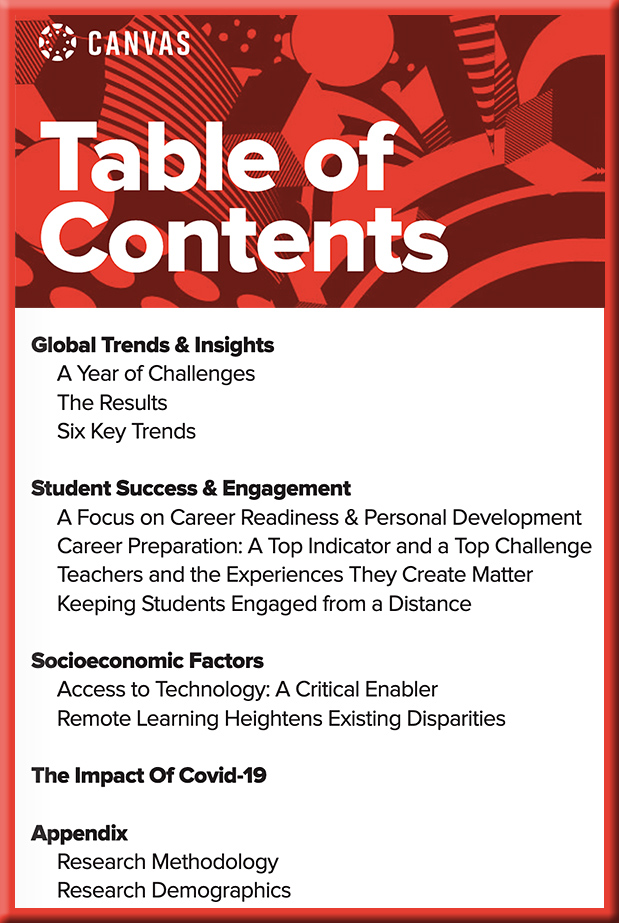
State of Student Success and Trends in Higher Education — from instructure.com
2020 Global Research Study and Trends
Excerpt (emphasis DSC):
In the following report, we’ve identified six leading trends for student success and engagement in today’s world:
- Career readiness is the number one priority for students.
- Institutions need to think beyond the lecture.
- Faculty-student engagement is critical.
- Online learning needs to be intentionally designed.
- Socioeconomic disparities impact engagement.
- Democratisation of education begins with equitable access.
Here is a helpful app to help teachers create green screen videos — from educatorstechnology.com
Excerpt:
If you are looking for a good green screen app to use in your teaching and with your students in class, Do Ink is definitely one of the first options you should consider. Green Screen by Do Ink allows you to easily create beautiful videos and visual presentations incorporating a wide variety of multimedia materials. As a teacher, you can use it to design tutorials, step-by-step guides, explainers, visual illustrations, presentations, posters, and many more.
DC: Note to self (while watching a creative master at Adobe Max tonight) pic.twitter.com/6nlCcuZpto
— Daniel Christian (he/him) (@dchristian5) October 22, 2020
Richard Mayer Has Spent Decades On Educational Research. Here are His Pandemic Teaching Tips. — from edsurge.com by Jeff Young
Excerpt:
EdSurge recently reached out to Mayer, who is a professor of psychology at the University of California at Santa Barbara, to get his thoughts on the lessons his research reveals that can guide teachers and professors.
…
One finding is that students learn better if they see a video of the professor actually working out a math problem or concept on a whiteboard, than if they see a video of the same professor standing next to a whiteboard where the problem has already been worked out.
5 things that show students aren’t the only ones learning during the pandemic — from mlive.com by Melissa Frick
Excerpts:
“Never in my 33 years of teaching did I ever think it would be like this,” the Muskegon High School teacher said of virtual learning, which the district is using this semester to mitigate the spread of the coronavirus.
“It’s a huge learning curve.”
With Michigan K-12 schools back in session for the fall – some virtually, some in-person, and some a mix of both – students aren’t the only ones doing the learning this year. Amid this unprecedented school year, teachers are learning some new things along the way, too.
…
3. Virtual learning has exposed the depth of Michigan’s digital divide
Systemic gaps in technology access among school districts around the state left thousands of students at a disadvantage this year, despite efforts by educators to fulfill short-term connectivity needs during virtual learning.
From DSC:
These are just a couple of reasons that I say that Rome wasn’t built overnight. But it’s great to see that tools are being added to teaching toolboxes and learners’ toolboxes as well:
“It’s easy for them to get onto Zoom now, they can go onto Google Classroom and go into the lesson right along with us,” she said. “I’m surprised at how smooth it’s running now.”
10 Ways You Can Use Podcasts in Your Course to Engage Students — from barbihoneycutt.com by Barbi Honeycutt, Ph.D.
Excerpts:
Have you used podcasts in your courses yet? If not, you might want to consider it! Podcasts can be an excellent tool to add to your lesson to enhance a message, present more in-depth perspectives, and offer a different medium for students to engage with the course content.
…
10 Ways You Can Use Podcasts in a Course or Lesson:
1) Compare and contrast two podcast episodes where the same topic is discussed by different guests.
2) Use an episode as a supplement or additional resource for a reading assignment.
New Film Addresses Mental Health By Challenging Us To ‘Listen’ To Our Youth Voice — from gettingsmart.com by Michael Niehoff
Also see:
IW Official Guide: World Mental Health Day Supporting the workplace during the pandemic & beyond — from inspiring-workplaces.com by Aimee O’Leary
For World Mental Health Day 2020, we have created a quick guide of 10 top tips for you. It has been compiled from experts around the world on how to support the mental health of your people during these challenging times.
It includes:
- How to do your part to break the stigma
- How to create functional routines
- How to look out for colleagues without being invasive
- How to stay connected
- and more
Lastly, before reading the guide, reach out to someone you know today, who you have haven’t spoken with in a while and simply ask… How are you, really? It will make a huge difference.
*****************
Addendum on 10/13/20:
As the Pandemic Grinds On, Here Are 5 Big Worries of College Presidents — from chronicle.com by Michael Vasquez
Excerpt:
Campus mental health is the No. 1 worry. The college leaders were asked to select their five top concerns from a list of 19 Covid-related issues. Fifty-three percent of presidents listed student mental health, and 42 percent pointed to faculty and staff mental health as being among their biggest worries. Anxiety, uncertainty, depression, and grief — compounded by the isolation of the pandemic — have exacted an often invisible toll on people who study and work in higher education.
Fostering Student Creativity with Green-Screen Videos — from teachingprofessor.com by Jason Webb and Jeff Mangram
Excerpt:
Educators have come to realize that videos are highly effective and engaging ways to create online course content. One of the most engaging forms uses a green-screen backdrop to project images or videos behind or next to the speaker. Barbara Oakley used this technique in her famous course Learning How to Learn, where she brought in images to illustrate and amplify her message during course videos. Take a look at this example and consider the fact that Oakley shot the videos in her basement using only a couple hundred dollars’ worth of supplies. Today most colleges already have green-screen studios set up for marketing or other uses.










